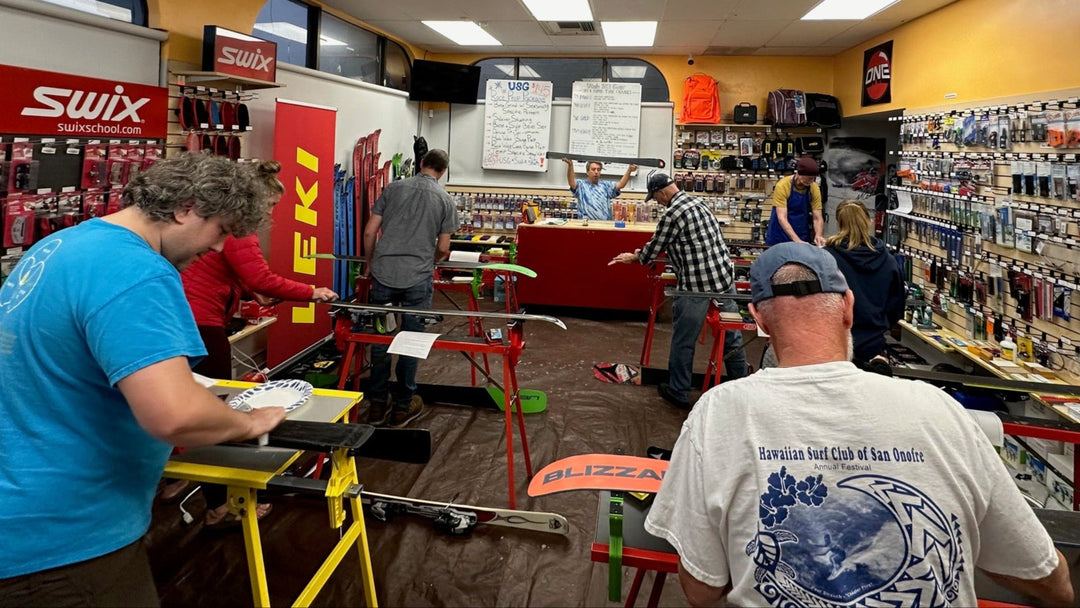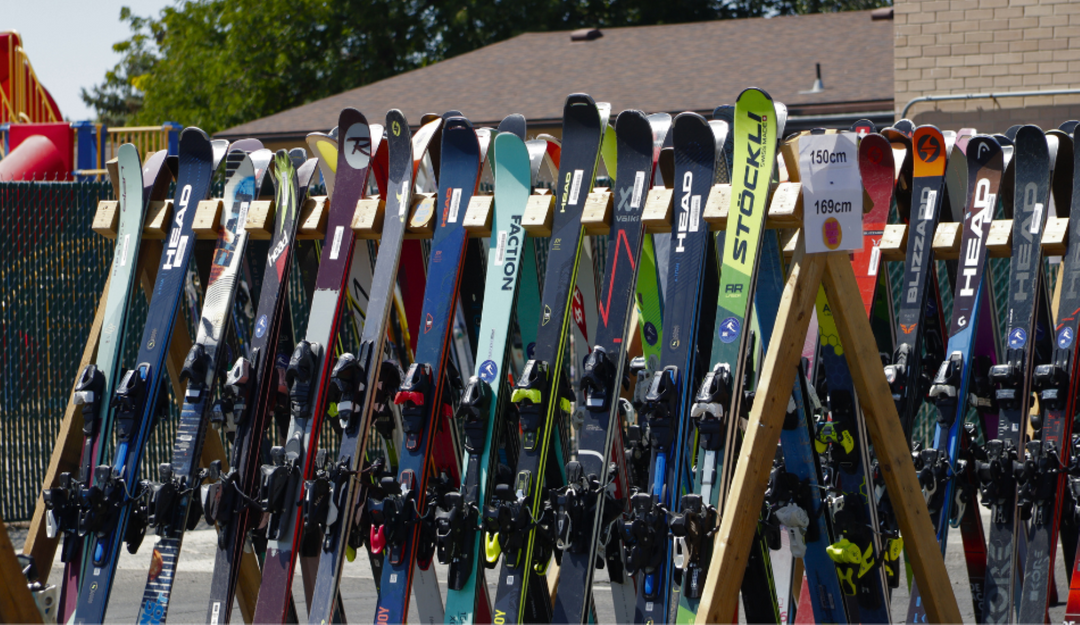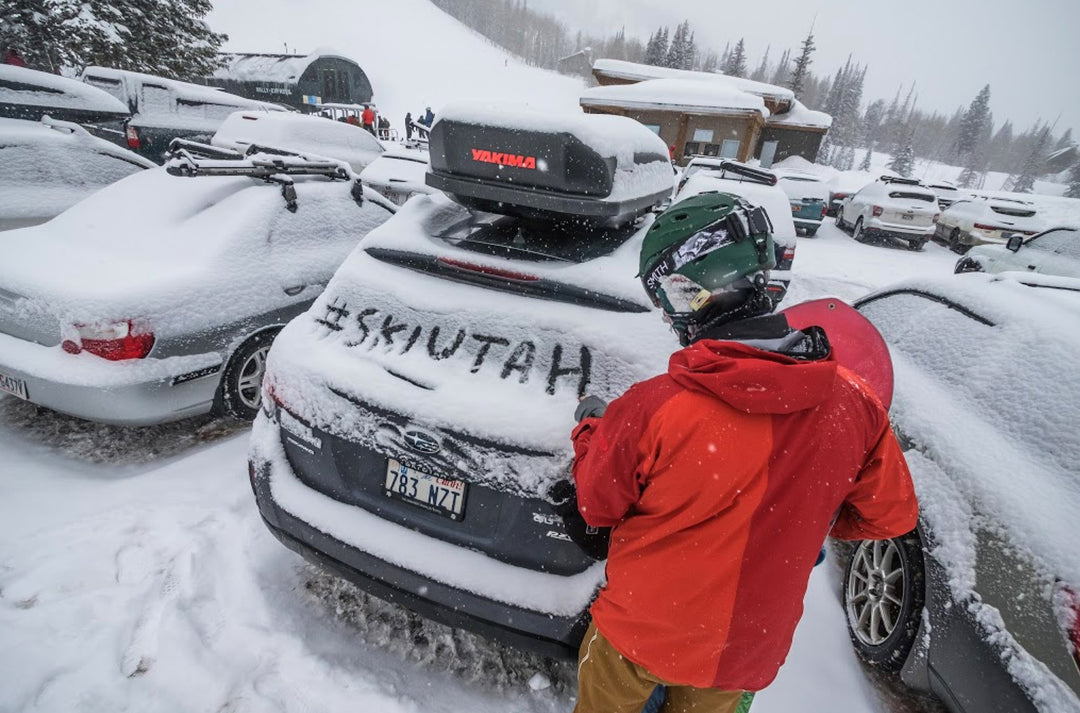How To Get Your Ski Gear Ready for the Upcoming Season
It’s that time of year again when the blazing sun has us dreaming about snow. When the day finally comes to hit the slopes, don’t let damaged, poor fitting or unusable gear ruin it for you or your family. Not being prepared with working gear will only add extra stress to an activity that is meant to be fun. In order to make your gear last longer and enhance your performance, it’s important to make sure your gear is in proper condition and as ready to hit the slopes as you are.
Ski Tuning: How do you know exactly what kind of tune you need for your skis to perform properly, or if you even need a tune at all? I like to break it up into four main categories. The first? Repairs. Any base damage, especially deep enough to expose the core of the ski will need to be repaired to avoid water seeping in. Next is edge sharpening. Having sharp edges will grip icy and hard packed surfaces, giving you the confidence to turn in any conditions. The third is often overlooked but important to help move water out of the base of your ski: base grinding. This helps your skis from feeling slow and sticky, as does the fourth category: ski waxing. Waxing keeps your skis hydrated and fast out on the slopes. You may be wondering how often you should be tuning your skis as well. A base grind you only want to do up to 6 times over the life of a ski, where waxing and edging you can do about every 6 days skied, depending on personal preference. If you’re looking to enhance performance without always bringing your skis into the shop, there are plenty of tuning supplies you can use in between shop tunes like rub on wax for your base or diamond files for your edges.

Bindings: Inspect for wear and tear. Bindings are the biggest safety concern when skiing so it is important to know they are working correctly. Most binding manufacturers recommend taking your skis and boots to your local shop once a year to have the bindings tested and your DIN setting properly adjusted. The DIN setting is important because it controls how easily your skis release from your boots in the event of a crash. Failure to release can cause serious injury. Having the DIN adjusted by a certified technician is especially important for growing children who have changed in weight, height and ability and absolutely necessary if they have grown in boot size. Check out how this is done here!
Boots: Try the boot on to make sure you don't have any uncomfortable pressure points. Check the heel and toe on the outside of the ski boot for excessive wear as this can change the way your boots interact with your binding. Check to see if your liners are packed out. You can tell if your ski boots are packed out by feeling foot movement inside the boot like heel lift, or your foot sloshing around in the boot. Now when I say “packed out”, I mean normal wear and tear from use. After about 200 ski days (more or less depending on the quality of your liner), the stitching, fabric and other materials making up your boot liner begin to stretch out and loosen slightly, causing the liner to fit your foot less securely. If your budget isn’t allowing for new boots or liners or you just don’t want a new setup, a great solution is adding some foam inserts, which mold to the bottom of your foot and take up a little of that extra space in your boot to allow for a better fit. When trying on your boots, don’t forget to wear ski socks!

Ski Poles: Ski poles aren’t necessary for children or adults who are just starting out, but once you are comfortable skiing parallel, you’ll most definitely want some poles to improve your performance. To make sure poles are still the right size for growing children, flip the pole upside down and have them hold underneath the basket. If the arm forms a 90 degree angle, the poles are a great fit. If the lower arm from the elbow down is dropping below the 90 degree angle, it may be time for a size upgrade.
Helmets/Goggles: Ski and snowboard helmets typically last 3-5 years since foam and plastic become less effective with age. Additionally, if you took a heavy impact to the helmet last season or there are cracks in the plastic, time for a new one. If you have a growing child, you can make sure they have the right size by putting the helmet on their head, tightening the chin strap appropriately so it is snug, and having them gently shake their head from side to side. If there is no movement and it is not hurting their head, the helmet fits! Another trick is to make sure that one finger can fit between the helmet and the head but no more. Keep in mind that many helmets have an adjustable dial on the back that will make the helmet looser or tighter. When do you need new goggles? If you got a new helmet, you will want to try on the goggles with it to make sure you don't have what some like to call a gaper gap, or helmet gap between the helmet and goggles. Lens scratches or deteriorating foam may warrant new goggles as well. Here you can check out lots of helmet and goggle options.
Outerwear/Accessories: Clean jackets, gloves and snow pants properly using their cleaning instructions. One trick to get more use out of your gear is to use treatment with spray-on or wash-in formula to make outerwear last longer and keep it from getting soaked with moisture. Application is easier than you think!
Of course your local ski shop is always here to help, but having a basic understanding of how to prepare for the upcoming season will help you to ask the right questions to make your season one for the books!




